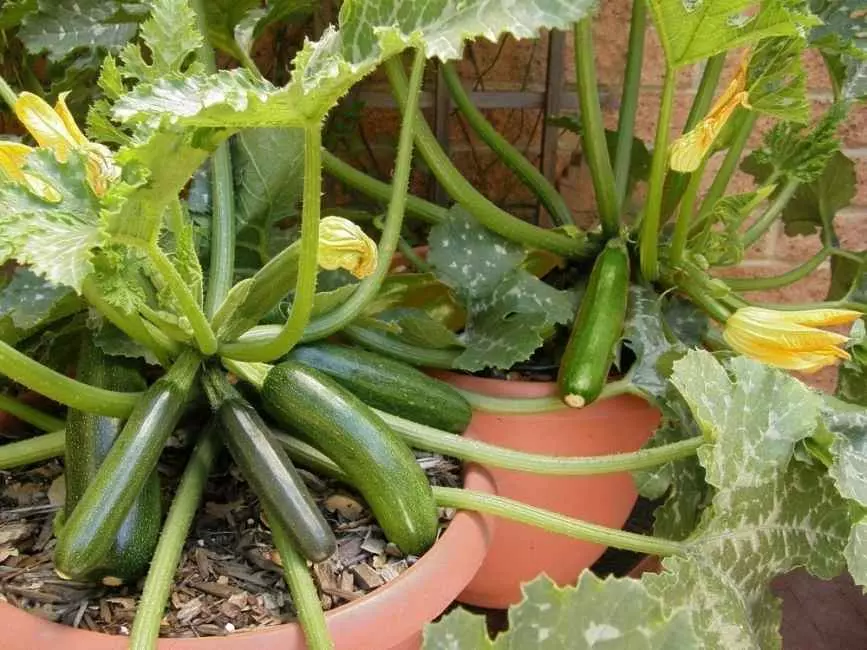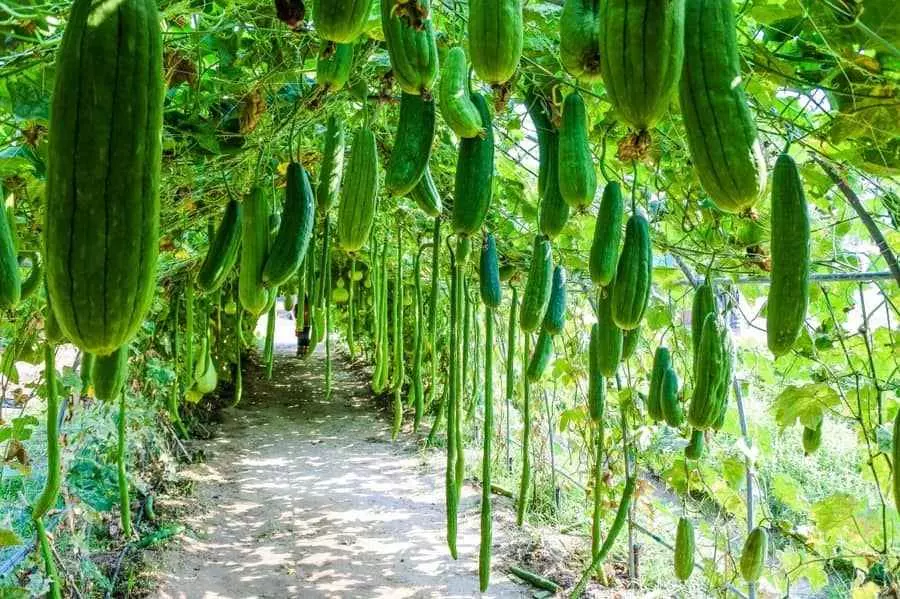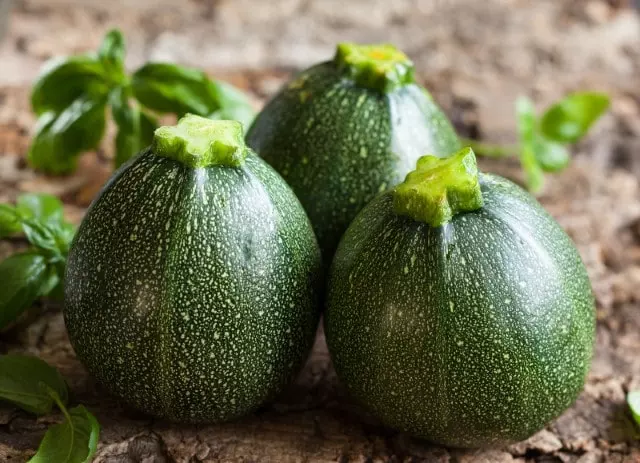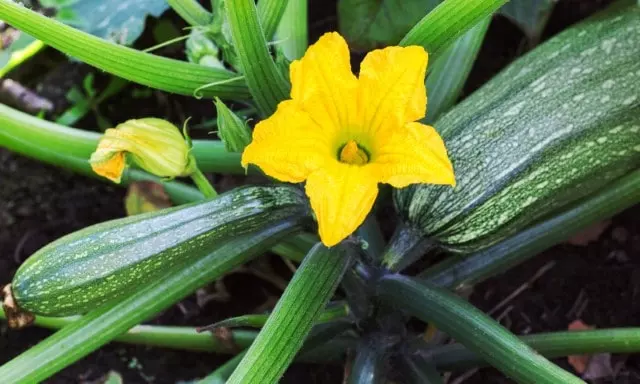Zucchini and squash can be planted in the ground or on a trellis. However, many gardeners prefer planting zucchini on a trellis to save more space in the garden, prevent pest problems by having the zucchinis far from the ground, and don’t lean down when harvesting. Growing zucchini in a vertical garden is possible only following a few tips I will mention in this article because the zucchini plant is not a vine and is not a climbing plant. So, continue reading this article, to learn How to Grow Zucchini on a Trellis.
Zucchini is a summer squash that is easy to grow and can be harvested in the summer months. It is a great vegetable to grow, but it can also be a bit of a challenge since zucchini grows really fast. Some gardeners have found that planting zucchini on a trellis or other vertical structure can help them keep up with their harvest. This article will show you key steps to growing zucchini vertically to save space in your garden and increase yields. Growing zucchini vertically can be done by planting it on a trellis or using a vertical garden to grow it.
Zucchinis grow very easily and that will not be a drawback. But keep in mind that the zucchini plant is not a climbing plant or a vine. So, you will need these tips to successfully plant zucchinis on a trellis and increase the harvest. Growing zucchini on a trellis can be an effective way of keeping up with production, but there are some things you will need to consider before planting zucchini on this type of structure.
If the zucchini plant is not a climbing plant or a vine, Why Planting Zucchini on a Trellis? Because growing zucchini vertically has many advantages, as I will explain in the following paragraphs.
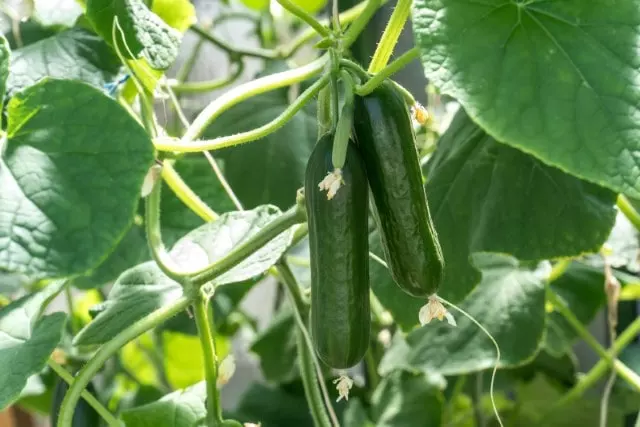
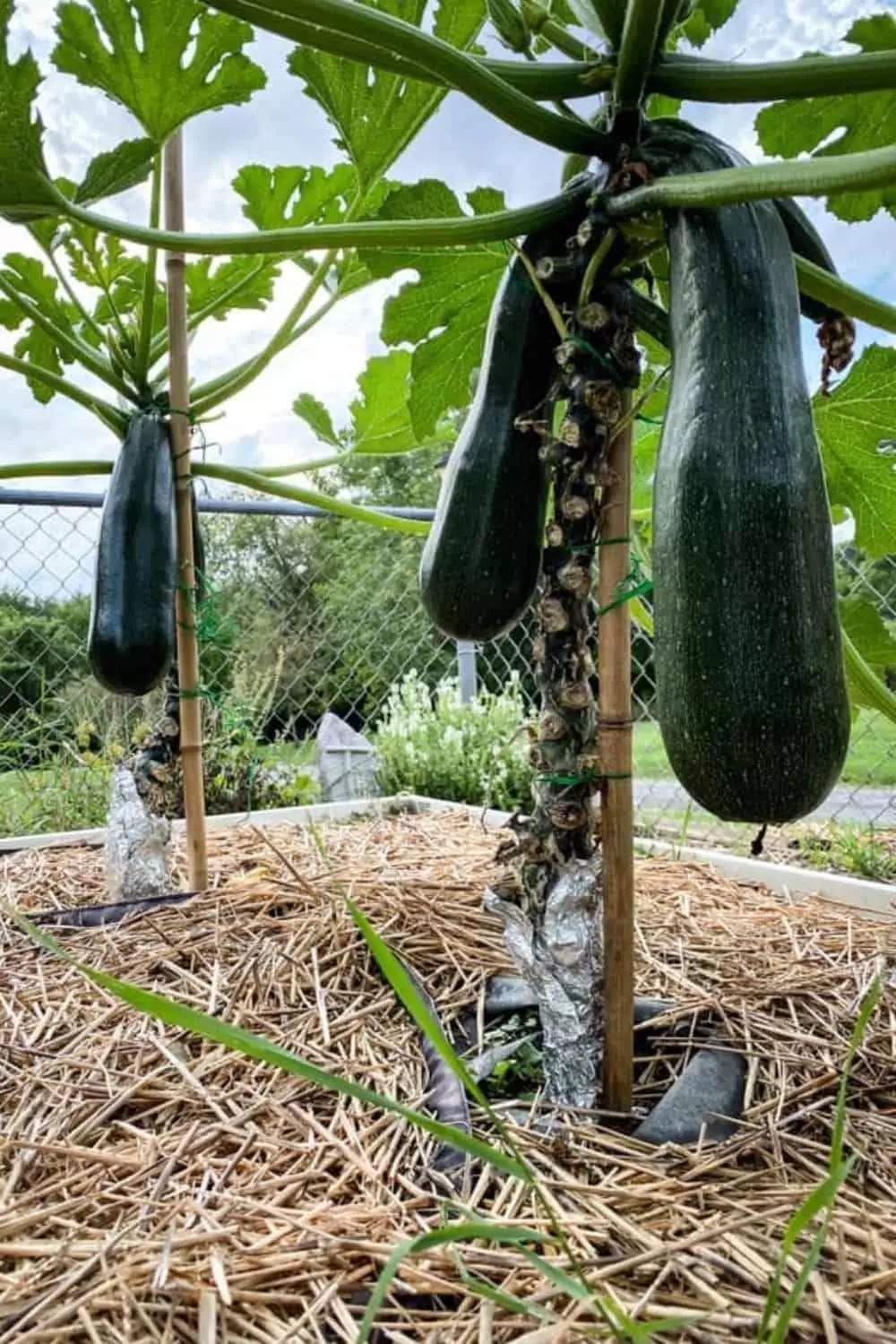
Table of Contents
Advantages of Growing Zucchini Vertically
Growing zucchini vertically on a trellis or support offers several advantages over allowing the plants to grow along the ground:
- Space Saving: Trellising zucchini allows you to grow more in a smaller garden space since the plants take up very little ground area.
- Higher Yields: When grown vertically, zucchini plants tend to produce higher yields as they get better air circulation and sunlight exposure to the entire plant.
- Reduced Disease: Keeping the zucchini fruit off the soil helps prevent rot, moisture damage, and soil-borne diseases that can afflict fruits resting on damp ground.
- Easier Harvesting: Zucchini hanging from a trellis are much easier to spot and harvest compared to searching through large, bushy plants lying on the ground.
- Better Air Flow: Vertical growth improves airflow around the plant, which helps prevent fungal diseases like powdery mildew that thrive in stagnant, humid conditions.
- Fewer Pests: Fewer pests can reach the fruits when they are grown vertically off the ground.
- Fewer Weeds: Zucchini vines growing upright shade out fewer areas, reducing weed growth.
- Extended Season: Fruits hanging vertically are less susceptible to fall frost damage, potentially extending your harvest season.
With the many benefits, using a sturdy trellis is highly recommended when growing zucchini and other vine crops in your vegetable garden.
Does Zucchini Need a Trellis?
No, it does not. However, it is the best way of cultivation to get good harvests, more abundant, do not deal with pests, and many more advantages of vertical gardening of zucchini that we explain below.
Zucchini and squash can be planted in the ground or on a trellis. Some gardeners prefer planting zucchini on a trellis to save more space in the garden. Growing zucchini in a vertical garden saves space and lessens pest problems because the plants are close together and separate from the ground so pests can’t get in.
Trellising is a good option when thinking about growing zucchini vertically. Also, thinking about the harvest, you don’t have to lean down to harvest zucchini.
Why do we prefer the vertical gardening of zucchini? Advantages of planting zucchini on a trellis:
- Save space in your garden
- Fewer pest problems from being far from the ground. Therefore, increasing yields.
- Don’t lean down to harvest zucchini
When Planting Zucchini on a Trellis, will the zucchini grow vertically? Zucchini grows vertically only if you help them to do so tying up the stems to the trellis. Every two or three days, move the vine ends through and around the chicken wire apertures. In this article, I will show you how to guide the zucchini plant to grow vertically on the trellis.
Trellises must be robust enough to sustain the heavy fruit and large vines. Zucchini grows in USDA hardiness zones 2 to 11.
Growing organic zucchini in the backyard is an easy plant to grow. However, it will take up a lot of precious garden space, I’ve always wanted to maximize the yield per square foot, and for years I’ve grown zucchini vertically in less than a square foot of space. Zucchini blossoms are edible and very tasty.
Planting zucchini on a trellis is easy to grow for the average person. You just put the seeds in the ground then go inside to watch TV for 4-6 days and then return inside to find your zucchinis. You just need to check out periodically and help the plant climb through the trellis.
What Kind of Trellis Should I Use to Grow Zucchini Vertically?
Growing zucchini vertically on a trellis can be a great way to save space in your garden and keep the plants off the ground. Any shape and type of trellis at least 6 feet tall will be fine for zucchini and squash.
What is a trellis? A trellis is a type of plant support that is used to train plants to grow upright on a fence or wall. A trellis can be made from any number of materials including wire mesh, wood, metal pipes, bamboo poles, or even tomato cages. The trellis is a piece of equipment that will support your zucchini plant so it can grow up to 6 feet tall. You can also use the trellis to grow other types of plants like cucumbers, peas, and beans.
Recommended reading: Discover Garden Trellis Ideas
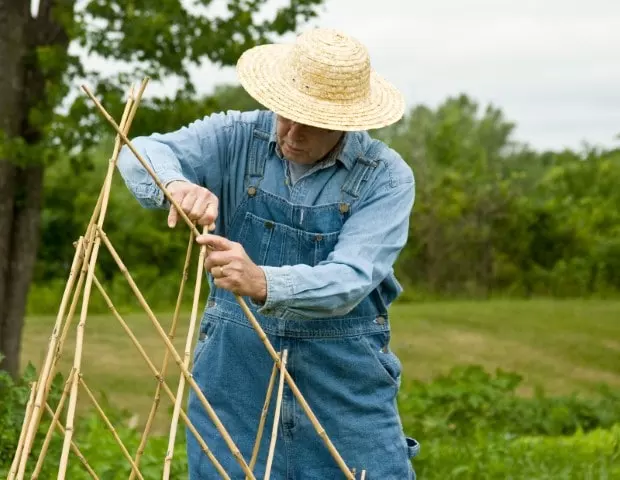
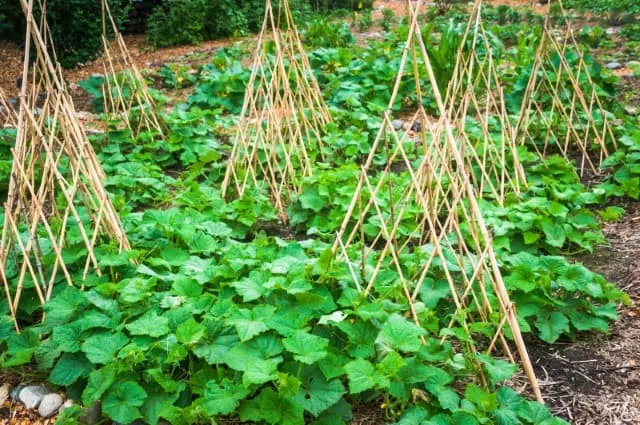
How to Plant Zucchini on a Trellis – Step-by-Step
I am going to summarize the steps you will need to follow to guide your zucchini plant to grow vertically. Here is the step-by-step guide for planting zucchini on a trellis
- The first thing to do is to choose a location in your garden where the shade generated by a 6-foot-tall trellis won’t harm other plants. Many vegetables suitable to grow in shade will appreciate the shadow provided by the zucchini trellis.
- Allow enough room for the row’s length; 16 to 18-foot rows work well.
- The trellis space should be measured and marked.
- Prepare the soil for planting along the trellis area’s length. If this is already a working garden, turn it over to a shovel’s depth. To produce loose, well-draining soil, dig down afoot for unworked soil, remove big boulders, and add compost or organic mulch.
- Mark the locations where the rebar posts will be installed. At either end of the trellis, place a marking and position the intermediate posts 4 to 6 feet apart. Sticks or tiny plant stakes can be used as temporary markers.
- Set up the structure on which the vertical zucchini growing will be based. Start setting up the trellis with a 6-foot metal rod that will serve as a garden stake for the branches.
- When seedlings emerge, plant or transplant them about 2 inches from the south side of the stake.
- As the plants begin to grow, you will need to guide their growth upward and begin tying the planting base. I am using simple degradable garden jute but other materials can be used, such as plastic zip ties.
- Every few centimeters tie the stem to the structure in order to guide the plant climbing through the trellis.
- If you see the zucchini plant start to bend downwards, you may need to keep adding string to support the plant to the trellis structure.
- As the plant and zucchini progress, it is advisable to cut off the leaves under the zucchini, without damaging the stem, which will allow the plant to focus on making the zucchini larger, rather than the plant investing energy in making and maintaining the leaves.
- The last step is to remember to harvest frequently so that more zucchini will grow.
Now, let’s see a few tips when planting zucchini on a trellis.
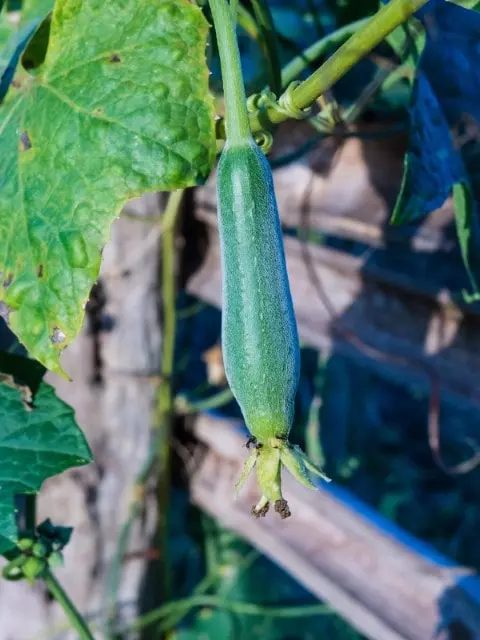
Growing and Planting Zucchini on a Trellis
Let’s see the step to growing and planting zucchini on a trellis
- Decide on the zucchini variety.
- Pick a zucchini cultivar suitable for vining like Black Beauty Zucchini, Zucchini Golden, Zucchini Cocozelle, Dark Start, and Zucchini Round are great options suitable for growing vertically on a trellis.
- Sowing zucchini seeds. Plant the seeds at the depth and interval specified on the seed packet of the chosen variety at the bottom of the trellis.
- As the seeds germinate and begin to grow, water them and keep the ground moist.
- As the vines grow through the gaps in the fence, train the zucchini plant up the trellis.
- Place growing zucchini so that they don’t get trapped in the openings in the fence. Because the vines develop swiftly, keep an eye on them on a regular basis.
- Keep an eye out for female flowers, which arrive approximately a week after the male flowers begin to blossom.
- Check the size of the emerging zucchini on a regular basis, because when planting zucchini and squash on a trellis usually grow very huge in just a day’s time.
- Pick zucchini when they’re still young.
- Harvest zucchini when it’s still young and fragile, around 6 to 8 inches long.
- Harvesting zucchini on a regular basis is helpful to prevent falling off the vine and smashing on the ground.
- Support the zucchini until harvest by anchoring it to the trellis with a temporary sling made of strips of soft cloth or old pantyhose if you want large-size squash for stuffing, shredding to make zucchini bread, or display.
- Tender Delicious Zucchini – Grow prolific Black Beauty Zucchini plants from these heirloom, open-pollinated seeds. This popular summer squash variety was an All-America Selections winner in 1957 for its abundant production of straight dark green zucchini with firm white flesh. The blossoms are also edible and can be stuffed for a delicious summer treat.
- Summer Bounty – A mix of five packs of edible zucchini & squash for you to plant and grow in your garden: Black Beauty Zucchini, Round Zucchini, Golden Zucchini, Grey Zucchini, and Straight Neck (Yellow) Summer Squash. These are popular, reliable summer squash variants that have delighted farmers and gardeners for their taste and production.
- SOW AND GROW: Your own home garden with these organic summer squash seeds that flourish in soil & goes right to your kitchen ingredients as fresh as can be. Non-GMO & free of chemicals & pesticides.
Companion Plants for Zucchini
| Companion Plants | Benefits for Zucchini |
| Marigolds | Repel nematodes and other pests, deter rabbits |
| Nasturtiums | Trap crop for aphids, add nutrients to the soil |
| Radishes | Deter cucumber beetles, loosen the soil |
| Beans | Nitrogen fixation, provide support for vines |
| Borage | Attract pollinators, deter tomato and cabbage worms |
| Sunflowers | Provide shade and support for vines |
| Dill | Attract beneficial insects, deter spider mites |
| Catnip | Repel aphids, ants, and other pests |
| Oregano | Deter pests, improve growth and flavor |
| Chives | Deter aphids and other pests |
| Mint | Deter rodents and other pests |
| Alyssum | Attract beneficial insects, improve soil |
| Calendula | Deter nematodes and other pests |
| Chamomile | Improve growth and flavor, deter pests |
For comprehensive information on the optimal companion plants for zucchini, as well as those to avoid, I highly recommend reading our article on Best Companion Plants for Zucchini (and Plants to Avoid).
How to Pollinate Zucchini by Hand

Hand pollination of zucchini can be necessary in situations where there is a lack of pollinators like bees or when growing zucchini in a greenhouse or indoors. It’s essential not to forget the importance of pollination, as zucchini plants rely on it to produce fruits. Here’s how you can hand-pollinate zucchini:
- Identify male and female flowers: Zucchini plants produce separate male and female flowers. Male flowers typically appear first and have a slender stem, while female flowers have a miniature fruit at the base of the flower.
- Choose the right time: Zucchini flowers typically open early in the morning, so it’s best to hand pollinate during this time when the flowers are fully open and pollen is available.
- Collect pollen: Gently shake the male flowers to release pollen onto a small brush or cotton swab. Alternatively, you can carefully remove the petals from a male flower to expose the stamen, which contains the pollen.
- Transfer pollen: Carefully brush or dab the collected pollen onto the stigma of a female flower. The stigma is the sticky, central part of the female flower’s pistil.
- Repeat the process: Continue hand pollinating each female flower with pollen from multiple male flowers to ensure thorough pollination.
- Monitor and repeat as needed: Keep an eye on the zucchini plants and continue hand pollinating as new female flowers open. Repeat the process regularly to ensure successful pollination and fruit set.
Male zucchini flowers serve the purpose of pollinating the female flowers, which are the ones responsible for fruit production. After pollination, male flowers can be harvested for consumption, as they are edible. I recommend reading our article on harvesting zucchini flowers.
Harvest Zucchini
Zucchini are prolific producers, so you’ll want to stay on top of harvesting them frequently. The ideal time to pick zucchini is when they are 6-8 inches long. Any bigger and they’ll be tough and seedy.
Check your plants every 1-2 days during peak season. The fruits can seem to double in size overnight! Use a knife or pruners to snip zucchini off the vine, leaving an inch or so of stem attached.
For larger ones, you can simply twist and pull the fruit to pop it off the plant. But be gentle—we don’t want to damage those productive vines.
After picking, get your fresh zucchini into the fridge pronto. They’ll keep for 4-5 days stored in a perforated plastic bag.
Here’s the golden rule: The more you pick zucchini, the more they’ll produce! So even if you can’t eat them all, keep harvesting every few days. Leaving zucchini on the plant signals it to stop fruiting.
Recommend reading: When to Harvest Zucchini: When Is Zucchini Ready to Pick
